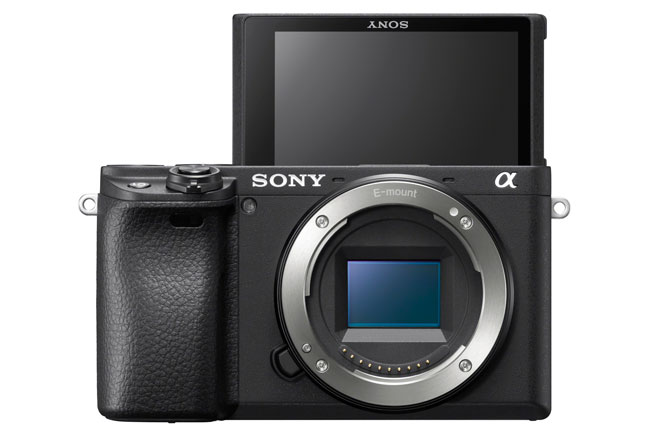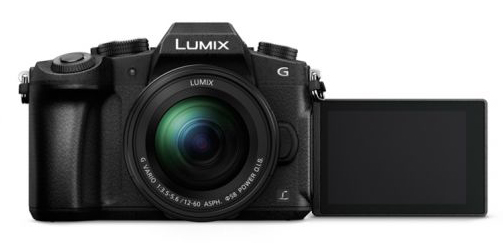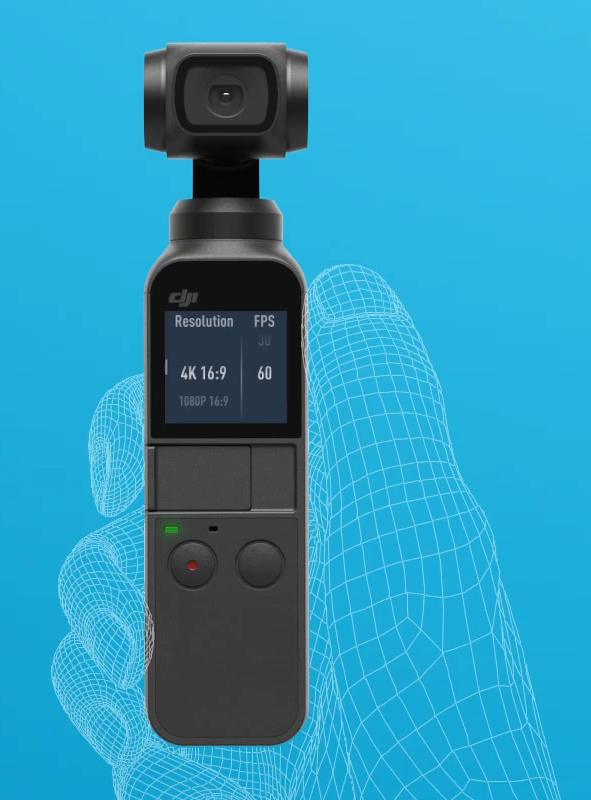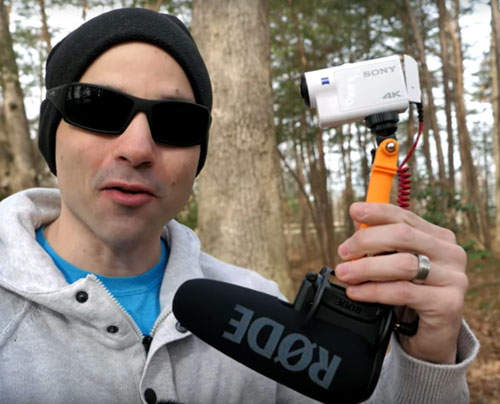Best Vlogging Camera 2019
Depending on your budget, your smartphone could be your best vlogging camera option. OK, I would say that as I’m running a smartphone film festival. Well, that doesn’t mean I can’t talk about other cameras too.
Two main things should be in your mind when choosing a vlogging camera: your budget and your need for mobility.
If you are looking to start a YouTube channel and perhaps make money from it, I still say the content of your video is far more important than the camera. All successful YouTube channels have engaging content – it’s a simple fact.
Problem is, it’s much easier to quantify the quality of a camera than the quality of the content made with it.
My tip is to spend as little as you can on a camera to start with. After you have got your vlog up and running for a few months, you will begin to understand what way of shooting you prefer. And therefore, what type of camera suits you best.
A camera which allows interchangeable lenses is the basis of most photographer kits. Thing is, even smartphones allow conversion lenses to be added. Recent models of smartphone often come with 3 lenses built in. But if a shallow depth of field is what you are after, DSLRs or mirrorless cameras still out-perform smartphones and action cameras.
4K or not to 4K?
Most video online is still viewed at a max of 1080p HD. But 4K video is not only about higher resolution. Shooting 4K allows you to crop and reframe your video in the edit. Need a close up but didn’t get close enough? No problem – just zoom in using your editing software and keep the HD level quality.
In television and consumer media, 4K is considered to be 3840 × 2160 pixels frame size compared to 1920 x 1080 HD. So, if you master the final video in HD, you have extra screen space to play with. You can add a slow zoom in, pan or up and down movement as well as crop the frame.
4K sure does soak up memory space, however. Roughly speaking, 4k is four times the resolution as 1080 (full HD) video thus resulting in a file size that is four times bigger. So a full HD (1080p) video which takes up 20GB translates to a 4k version that would be 80GB.
That said, there are variations in between. I generally shoot in 2k, which gives me some edit flexibility without meaning I have to carry a stack of drives every time I shoot.
Sony Alpha a6400
Largely unchanged since the original a6000 model, the Sony Alpha a6400 mirrorless camera has a monitor screen which can flip to front facing. Not the most beautiful camera to look at but has great image quality, top auto focus and is capable of shooting 4K video.
The upgraded Sony Eye-AF is great, meaning you don’t have to worry about where your camera is focused. In addition, Real-Time Tracking allows you to pick a moving subject and stick to them like glue. There’s some issues such as a problem with the flip screen and a hotshoe mounted mic conflicting. There’s also no in-body stabilisation. But at least the updated colour science in the a6400 is an improvement on previous models.
- Sensor: APS-C
- Megapixels: 24.2MP
- Lens mount: Sony E
- Max video resolution: 4K
- Check Price on Amazon
There’s some beautiful footage tests of the a6400 on YouTube, but if you’re looking for a vlogging camera, then you’ll want to see it tested in that kind of scenario. This was one of the best ones I found:
Panasonic Lumix G85 / G80
Features include a weather-sealed body, 4K recording, a mic input, fast focusing and sideways flip out screen. The different numbers represent the USA-Canada model (G85) and the Europe model (G80). Only the G85 comes with unlimited record time.
The image quality is nice and crisp. Plus the camera can use face detection to keep a lock on subjects as they move. Although it lacks on-sensor phase-detect AF, focus changes happen nice and smoothly while you’re recording. There’s also both optical and electrical inbuilt image stabilisation which is always using for vlogging while you’re moving.
Although Panasonic has just announced a newer G90 / G95 model with a 20MP sensor, it’s not available for review yet. Meanwhile, the G80 / G85 will remain on sale at a lower price.
Some downsides are that the G80 / G85 is not the best low light performer and the autofocus can be a little unreliable.
- Sensor: Micro Four Thirds
- Megapixels: 16MP
- Lens mount: Micro Four Thirds
- Max video resolution: 4K
- Check Price on Amazon.
Panasonic Lumix GH5 or GH5S
The Panasonic Lumix GH5 (or new GH5S) are probably for the serious vlogger. This camera is a pretty high end piece of kit if you’re simply using it to record yourself travelling, moving around town or talking to camera about your chosen subject. But if you are really looking to create some special visuals for your vlog, then this could be the choice for you.
The GH5 comes with in-body stabilisation and up to 60/50p 4K video.
Note the GH5 comes with in-body sensor-based image stabilisation system, which you don’t get with the GH5S. On the other hand, the low light performance on the GH5S is much better.
- Sensor: Micro Four Thirds
- Megapixels: 20.3MP
- Lens mount: Micro Four Thirds
- Max video resolution: 4K (DCI)
- Check Price of GH5 on Amazon
- Check Price of GH5S on Amazon
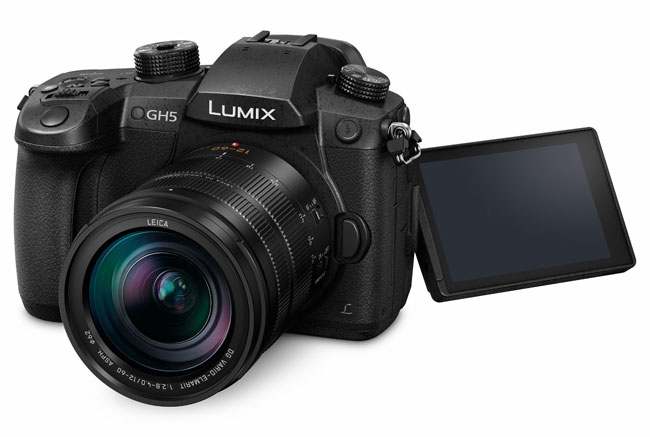 Adam Allam does a good comparison test between the two, especially demonstrating the GH5S low light capabilities.
Adam Allam does a good comparison test between the two, especially demonstrating the GH5S low light capabilities.
Aside from DSLR or mirrorless cameras, there are a number of other choices.
DJI Osmo Pocket
The DJI Osmo Pocket is pretty much a camera designed specifically with vloggers in mind. One thing most vloggers often use with their camera is a 3-axis gimbal stabilizer. But the Osmo Pocket is a camera and gimbal all in one.
It’s also very small and lightweight. If you want a device that is ready to essentially fulfill all your vlogging needs right out of the box, the Osmo Pocket might be the tool for you. The little device produces up to 4K video, fluidly moving time lapses and includes active face tracking.
The DJI Osmo Pocket has divided option – some love it some hate it. But as an out-of-the-box vlogging device, it certainly has advantages. Mainly, 4K (smartphone quality) video with gimbal level stability in a device which fits in the palm of your hand.
The main flaw from a vlogger’s point of view is perhaps the audio. The Osmo Pocket has two microphones, one just above the recording button and another on the bottom of the device, which do an “ok” job. You can add an external mic with an adapter (extra cost), however.
- Sensor: 1/2.3-inch
- Megapixels: 12MP
- Max video resolution: 4K
- Check Price on Amazon.
Sony FDRX3000
The Sony X3000 is a few years old now, but still one of the best action cameras on the market and still competes well with GoPros. The Sony has 3 features which make this camera stand out, even in 2019: field of view, stabilization and audio.
You can set the ZEISS lens to 3 separate focal lengths (wide, medium and narrow) giving you more flexibility and shooting options. The camera still has one of the best inbuilt stabilization systems for this type of device. In fact, for just about any camera.
The inbuilt microphone jack on this device makes it unique among cameras of this style. Neither GoPros or DJI devices have one. To be able to connect a mic directly is a huge bonus for vloggers and filmmakers in general. And even the inbuilt mic is pretty good quality.
This is a camera that weighs just over 90 grams. By comparison, just the body of the Panasonic GH5s weighs 730 grams. This camera isn’t going to give you the best quality image, but it will be the easiest to use and carry around with you.
- Sensor: 1/2.5-inch
- Megapixels: 12MP
- Max video resolution: 4K
- Check Price on Amazon.
Smartphone Cameras for Vlogging
The most convenient camera of all is the camera you have in your pocket, right? Most of the mid-to-top range smartphones now shoot 4K. You can also add conversion lenses to give you more shooting options.
Added to that, most top range smartphones come with inbuilt stabilization – both EIS and OIS. And we haven’t finished… you can also get a huge range of controls over your smartphone camera. Depending on your smartphone, you can either use the included app or install a 3rd party app such as FiLMiC Pro or Mavis.
Once you add a smartphone gimbal stabilizer, you are really opening up your filmmaking choices. You can also easily add an external mic to your smartphone. You can mount them to tripods and so on. The sheer range of extra equipment for smartphones, whilst still being manageable in terms of weight, gives you enormous flexibility.
Just check out out official Kit List page to see the full range of what can be done to turn your smartphone in a filmmaking powerhouse.
Which phones are best for filmmaking? My favourites are iPhone, Samsung and the Google Pixel range. The Huawei’s are getting a lot of hype, with some reviewers claiming the P30 pro as best in the field. However, in my opinion, they are still short of quality when it comes to shooting video and don’t match the phones mentioned above.
Eager to learn more?
Join our weekly newsletter featuring inspiring stories, no-budget filmmaking tips and comprehensive equipment reviews to help you turn your film projects into reality!
(As an Amazon Associate I earn from qualifying purchases.)
Simon Horrocks
Simon Horrocks is a screenwriter & filmmaker. His debut feature THIRD CONTACT was shot on a consumer camcorder and premiered at the BFI IMAX in 2013. His shot-on-smartphones sci-fi series SILENT EYE featured on Amazon Prime. He now runs a popular Patreon page which offers online courses for beginners, customised tips and more: www.patreon.com/SilentEye


